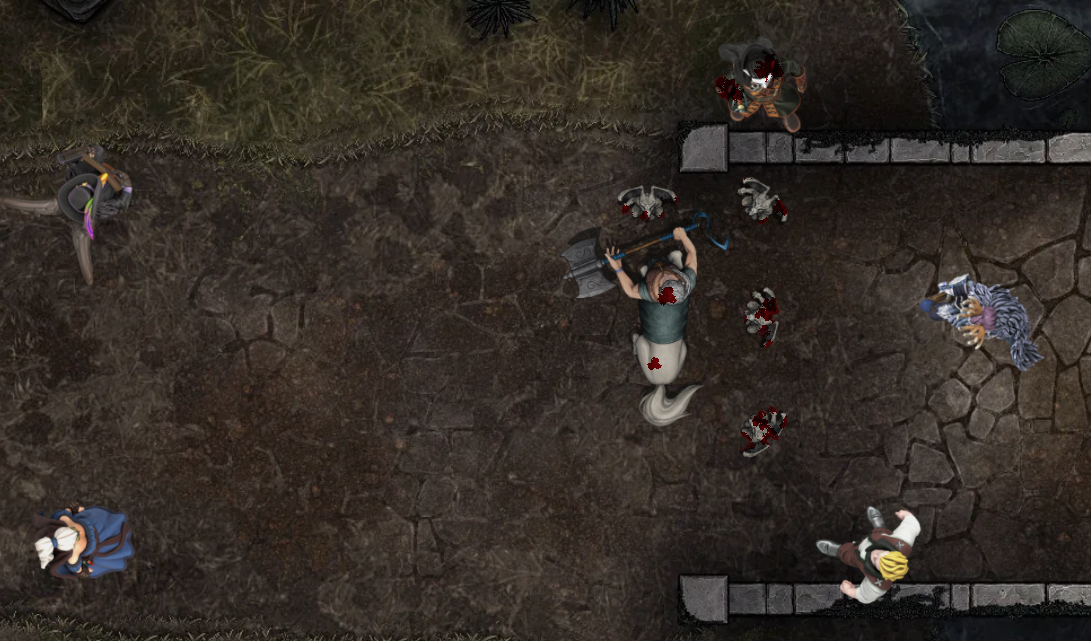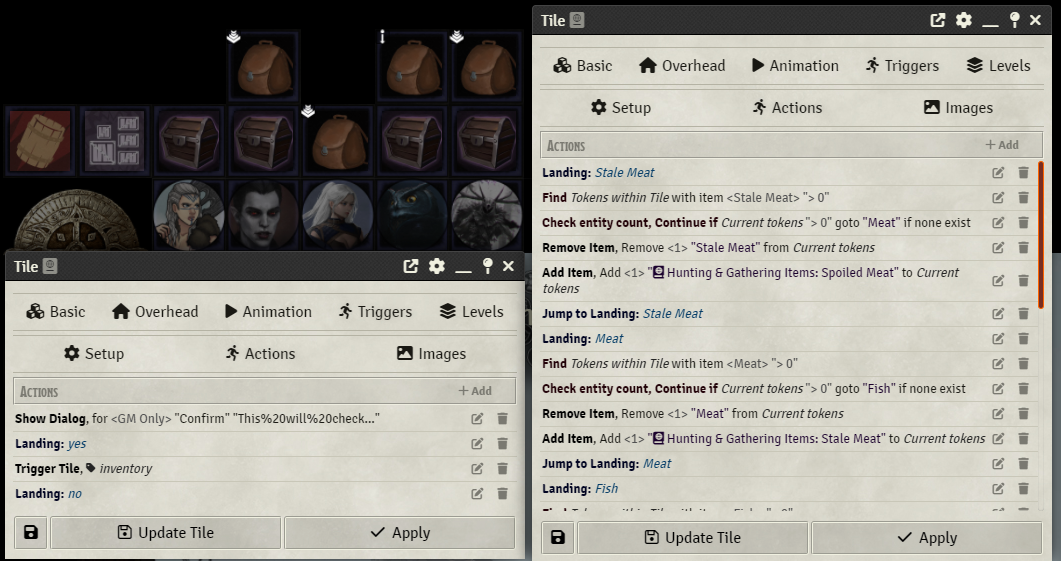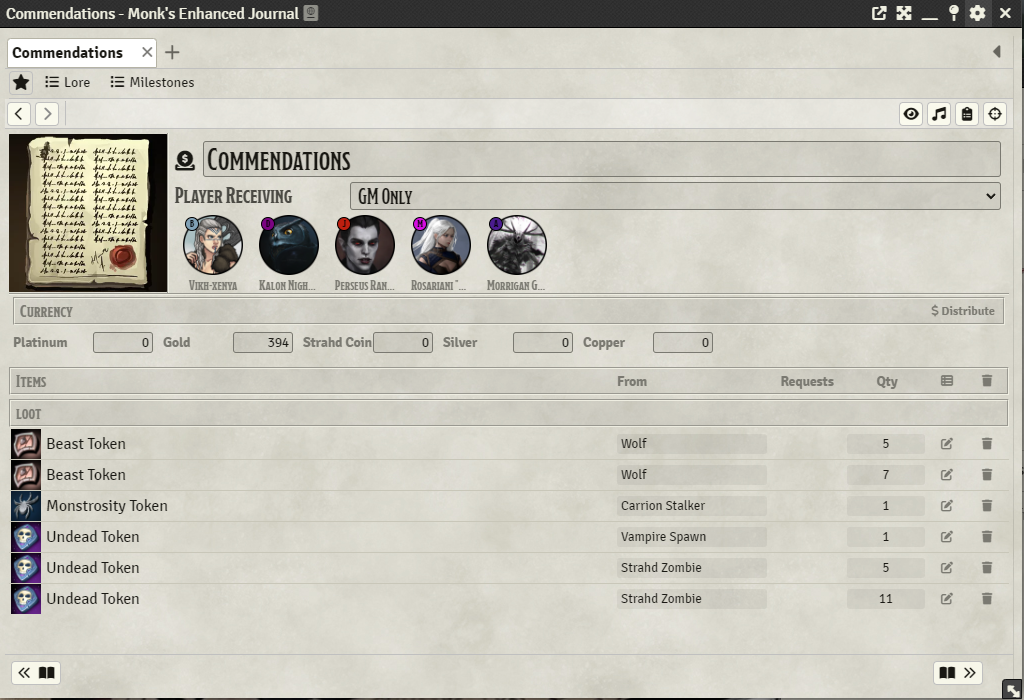For 2023 I'm running my second campaign, the highly regarded official adventure "Curse of Strahd". Leading up to my prep time, I surveyed my group to decide what sort of rules, systems, and focus we should have. This landed on a highly immersive, roleplay focused adventure with realism rules in place. The difficult part of this is balancing and automating those rules so that they don't encroach on the atmosphere. Here I'm sharing some of the resources and tools I found that anyone else leverage for this or any other campaign. Enjoy!
Supplemental Material
To beef up the story, I picked up several supplements and am incorporating bits and pieces. This gives us new NPCs, some guidance on pacing and intertwining plot hooks, and even some completely new quests and locations to discover. Here's a few recommendations:
- Raising the Stakes by Lunch Break Heroes
- Legends of Barovia by Pyram King
- Curse of Strahd: Reloaded by DragnaCarta
High Production Value
The setting for Curse of Strahd is the moody, mist covered demiplane of Barovia. Being a popular book, there's no shortage of art out there to draw from. To enhance the atmosphere of my game, I've drawn on these sources:
- Battlemaps by Aonbarr
- Monster tokens by Splattered Ink
- Character tokens created in Heroforge
- Major NPC Portraits by Ernesto Irawan
- Animated backdrops by James' RPG Art
- Music by Travis Savoie
- Ambience via Syrinscape
The result is a pretty cohesive look and feel where the majority of the gameplay happens in theatre of the mind, switching to overhead battle maps for exploration or combat. Artwork straight from the official book blends in seamlessly.
 |
| The team engaged in combat at the Tser River crossing |
 |
| Ireena enjoys the view at Tser Falls |
Travel System
I made the decision that to increase immersion, the players won't be looking at overworld map while travelling. Instead, they're on a travel montage scene using animated backdrops. Theatre Inserts lets us keep the players displayed as portraits along the bottom of the screen, including text boxes so they can continue roleplaying without necessarily being 'on the map'.
The overworld map does exist as a scene in my game world, but it's for my own reference only. I track the players location and have notes and landmarks in place as clickable buttons using Monk's Active Tile Triggers. Clicking a landmark switches up the background for the travel montage scene that the players have active, loads up the appropriate Syrinscape mood using SyrinControl, displays the readaloud text with Narrator Tools, and preloads the battlemap if one is available so that we can quickly switch to it.
 |
| The DM view of Barovia |
To display travel progress while on the road, I leveraged the Boss Bar module and created an actor that sits hidden on the montage scene. We use Innocenti's Travel Pace to chart our course, then set the actor's max hp to match. For each hour of travel, I use the programmed features to 'heal' the travel actor by an amount based on how many miles we can go at each pace. They also deplete a 'stamina' resource telling me when the party needs a rest. A togglable status effect for difficult terrain automatically halves the 'healing'. Meanwhile, the Random Encounters module automatically triggers for every 30 minutes of game world time while the travel scene is active, letting me know whether and what we're running into.
Food and Water
We enjoy the Rest Recovery addon for automating rules around characters needing to eat, drink, and sleep, then automatically applying exhaustion if needed. However, it becomes a pain reminding players to consume things from their character sheets (or make sure they have them on hand) on every long rest. Since they have a cart with a water barrel as part of their party, I placed all the rations and water in one place, and created features to automatically deplete a day's worth of food and water in one click, speeding up the process for everyone. The Party Resources module helps the team keep track of what they have on hand, including in their own inventories.
 |
| The food and water actor, party sheet and resource tracking |
 |
| Meat aging automation |
Encumbrance and Inventory
We're enforcing carrying capacity rules in this game, using the Variant Encumbrance module to track and automate the effects of carrying too much. While this does technically integrate with Item Collection to enable bags and chests to hold other items, our preferred approach is to create separate actors and use them as Item Piles instead. This way each bag and chest is an actual object in game with its own carrying capacity being tracked, and it's super easy for players to pop them open and drag and drop items back and forth.
Downtime Activities
On top of the standard rules for foraging in the wild, I've incorporated systems from a few different supplements into downtime activities. This took the creation of several roll tables and journal entries, leveraging the Downtime Tracking, Gatherer and Mastercrafted modules. From the players' end however, they can just click a button on their character sheet that guides them through the required rolls, and then adds the appropriate rewards directly to their inventory. During rounds of downtime, we use the Out of Combat Tracker so players can see at a glance what everyone else is up to.
Sources for these systems:
 |
| A player's downtime tab |
Journals and Lore
Being a big world with plenty of interconnected stories, I wanted to make sure my players have information at their fingertips so they could keep track of everything going on. So, on top of writing session recaps in a shared Google Doc, I also maintain the journal system within Foundry. Using Monk's Enhanced Journals, there's different types of entries for people, places, quests, points of interests, even shops. They can all be linked via relationships allowing the players to click around and explore wiki-style.
Combat Rewards
When you choose to run a campaign with milestone leveling instead of experience, random encounters and combat in general has the risk of becoming an unsatisfying slog. There are rules for calculating gold rewards for combat based on the difficulty rating, though it doesn't fit well with realism rules to be able to loot cash of off wild animals. To split the difference, I have Monk's Token Bar calculating rewards and assigning them to a Commendations loot sheet. The players can't collect these until they check in at town. I've created 'token' items that help track how many creatures they've downed of different types, and these will be redeemable for weapon enhancements or high quality gear.
 |
| The growing rewards list for the party's combat encounters |
 |
| The Faction reward shop, still in progress |
Time and Weather
I recreated the Barovian Lunar calendar in game, adding important dates to help keep the group centered in the world. Simple Calendar, Smalltime, and Smallweather all integrate together to automatically affect lighting and add weather effects to scenes.







